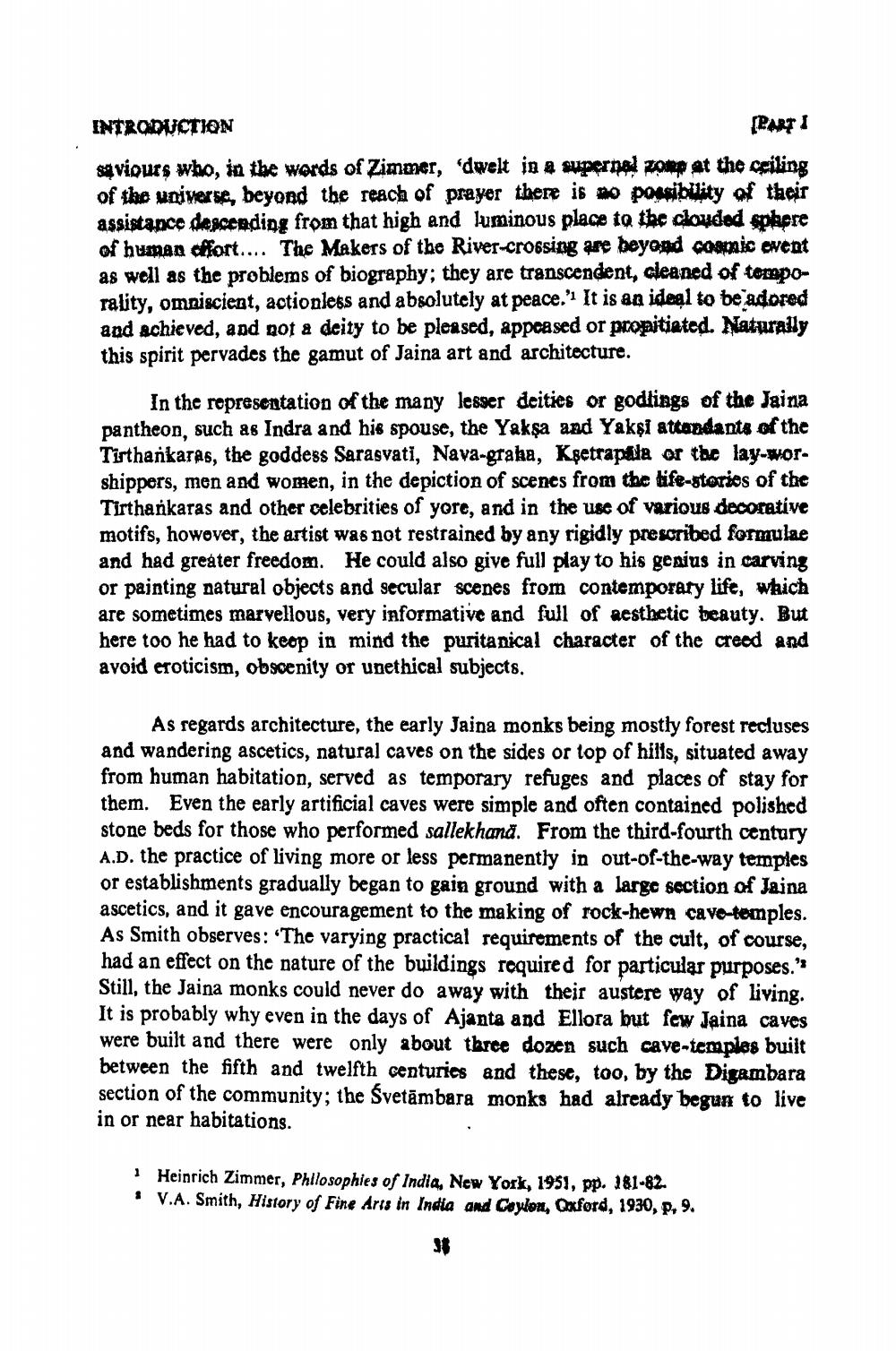________________
INTRODUCTION saviours who, in the words of Zimmer, dwelt in a superno, zomp at the ceiling of the universe, beyond the reach of prayer there is no possibility of their assistance descending from that high and luminous place to the clouded sphere of human affort.... The Makers of the River-crossing are beyond coarnic event as well as the problems of biography; they are transcendent, cleaned of temporality, omniscient, actionless and absolutely at peace.' It is an ideal to be adored and achieved, and not a deity to be pleased, appeased or propitiated. Naturally this spirit pervades the gamut of Jaina art and architecture.
In the representation of the many lesser deities or godlings of the Jaina pantheon, such as Indra and his spouse, the Yakşa and Yakşi attardants of the Títhankaras, the goddess Sarasvati, Nava-graha, Ksetrapala or the lay-worshippers, men and women, in the depiction of scenes from the life-stories of the Tirthańkaras and other celebrities of yore, and in the use of various decorative motifs, howover, the artist was not restrained by any rigidly prescribed formulae and had greater freedom. He could also give full play to his genius in carving or painting natural objects and secular scenes from contemporary life, which are sometimes marvellous, very informative and full of aesthetic beauty. But here too he had to keop in mind the puritanical character of the creed and avoid eroticism, obscenity or unethical subjects.
As regards architecture, the early Jaina monks being mostly forest recluses and wandering ascetics, natural caves on the sides or top of hilfs, situs from human habitation, served as temporary refuges and places of stay for them. Even the early artificial caves were simple and often contained polished stone beds for those who performed sallekhana. From the third-fourth century A.D. the practice of living more or less permanently in out-of-the-way temples or establishments gradually began to gain ground with a large section of Jaina ascetics, and it gave encouragement to the making of rock-hewn cave-temples. As Smith observes: The varying practical requirements of the cult, of course, had an effect on the nature of the buildings required for particular purposes.” Still, the Jaina monks could never do away with their austere way of living. It is probably why even in the days of Ajanta and Ellora but few Jaina caves were built and there were only about three dozen such cave-temples built between the fifth and twelfth centuries and these, too, by the Digambara section of the community; the Svetāmbara monks had already begun to live in or near habitations.
1 Heinrich Zimmer, Philosophies of India, New York, 1951, pp. 181-82. • V.A. Smith, History of Fine Arts in India and Ceylon, Oxford, 1930, p. 9.




